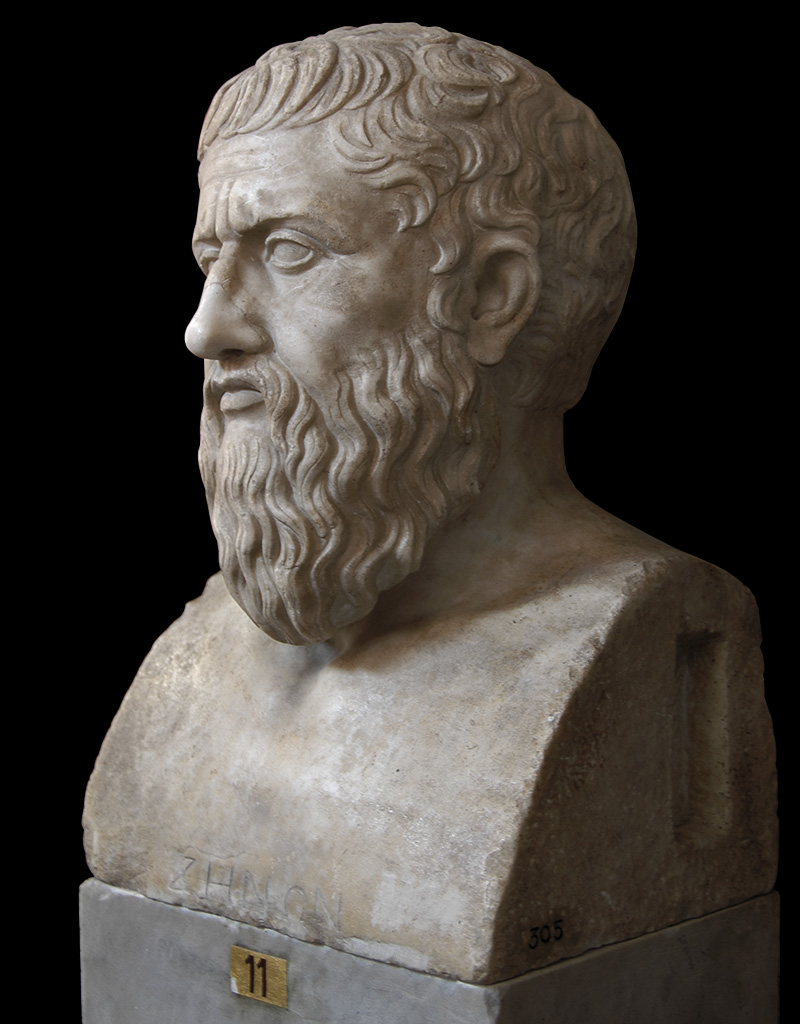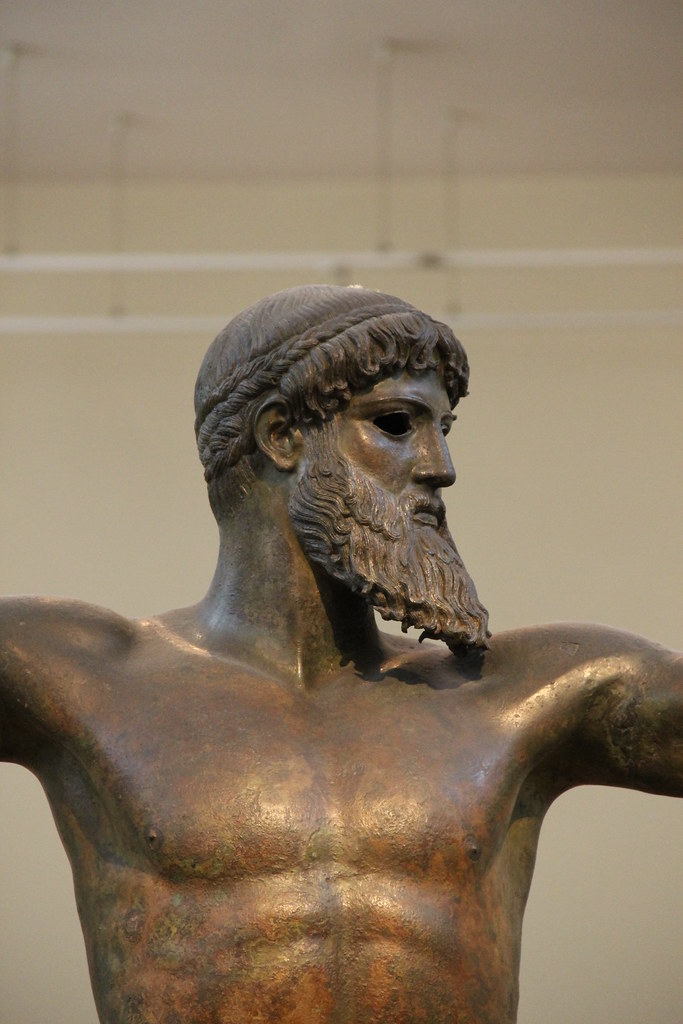The historical period of Ancient Greece is unique in the World history. It is considered to be the first period attested directly in proper historiography, while earlier ancient history or proto-history is known by much more circumstantial evidence

Image source: https://search.creativecommons.org/photos/1ceba880-c3b2-4edf-b723-f2274894f5d7 by archer10 (Dennis)
Poleis
A polis (plural: poleis) was the typical structure of a community in the ancient Greek world. A polis consisted of an urban centre, often fortified and with a sacred centre built on a natural acropolis or harbour, which controlled a surrounding territory (chora) of land.
The term polis has, therefore, been translated as ‘city-state’ as there was typically only one city and because an individual polis was independent from other poleis in terms of political, judicial, legal, religious and social institutions and practices, each polis was in effect a state. Like a state, each polis was also involved in international affairs, both with other poleis and non-Greek states in the areas of trade, political alliances and wars.
Other cultures had a similar social and political structure, notably, the Babylonians, Etruscans and Phoenicians, and the latter are believed to be the originators of the polis as a communal unit.

Image source: https://search.creativecommons.org/photos/c7366960-9cb7-414e-9b5d-ae8862ff98e6 by Jorge Lascar
Which were the two dominant cities in Ancient Greece?
Athens and Sparta, both powerful Greek city-states, had fought as allies in the Greco-Persian Wars between 499 and 449 B.C. In the wake of the Persian retreat, however, Athens grew more powerful and tensions rose, escalating into nearly three decades of war. Sparta emerged victorious, while the constant fighting left Athens bankrupt, exhausted and demoralized. Neither city-state regained the military strength they once had.
After heroic roles in the defeat of the Persians (480-479 B.C.), for the next half-century Athens and Sparta assumed preeminence among the city-states, and their rivalry slowly led to the long-expected showdown. Thucydides, a contemporary historian, believed that the war broke out because of Spartan fear of the rising power of Athens, whose empire and capital increasingly isolated less imaginative and less adventurous rivals.

Image source: https://search.creativecommons.org/photos/d291b67d-4e45-44b8-a982-9387d6f54758 by post-apocalyptic research institute
Strategy became prominent for the first time in Greek warfare, as the Athenians made mostly inconsequential probes in and around the Peloponnesus.
Nearly three decades of constant fighting left Athens bankrupt, exhausted, and demoralized. But Sparta and its allies were in no position to maintain an even harsher military hegemony over Greece. In the detritus of the Peloponnesian War, the agrarian fighting of the old polis was ended. Warfare now meant expansion of conflict onto a variety of costly and deadly new horizons, where past protocol meant little. The Greek genius was freed to apply capital, technology, and manpower to war without ethical restraint, but in the process the old idea of a city-state was lost.
What does distinguished the ancient Greeks?
Politics and philosophy are the two areas where Ancient Greek was more distinguished.
The city was the domain of potential collaboration in leading the good life, though it was by the same token the domain of potential contestation should that pursuit come to be understood as pitting some against others.
Political theorizing began in arguments about what politics was good for, who could participate in politics, and why, arguments which were tools in civic battles for ideological and material control as well as attempts to provide logical or architectonic frameworks for those battles.
In giving birth to philosophy, the polis also gave birth to a tension between what Aristotle would describe as two lives: the life of politics and the life of philosophy. A faultline between ethics and politics, so closely connected in an ancient culture preoccupied with flourishing (eudaimonia) and virtue (aretê), opened here.
In engaging with questions of rhetoric, virtue, knowledge, and justice, Socrates‘ philosophical life was engaged with the political even before his death (his trial and execution at the hands of the Athenian democratic regime) embattled him with it. But for his student Plato and Plato’s student Aristotle, the practice and even the study of human affairs such as politics were less divine, and so less admirable, than the broader study of truth about the natural and the divine realms. Philosophy might have to address the political but its highest calling soared above it.
It is important to recognize that the founders of ancient political philosophy were in part trying to define a new space of doing as philosophizing, independent of ordinary political action. This is not to say that they did not also have ordinary political intentions, but rather to stress that the invention of political philosophy was also intended as a mode of reflection upon the value of ordinary political life.

Image source: https://search.creativecommons.org/photos/e6086b66-ae7b-4689-94c0-2b2d4d8c3148 by Sergey Sosnovskiy
What is the most important architectural landmark of Ancient Greece?
Parthenon is the most important architectural landmark of Ancient Greece, chief temple of the Greek goddess Athena on the hill of the Acropolis at Athens, Greece. It was built in the mid-5th century bce and is generally considered to be the culmination of the development of the Doric order, the simplest of the three Classical Greek architectural orders. The name Parthenon refers to the cult of Athena Parthenos (“Athena the Virgin”) that was associated with the temple.
Directed by the Athenian statesman Pericles, the Parthenon was built by the architects Ictinus and Callicrates under the supervision of the sculptor Phidias. Work began in 447 bce, and the building itself was completed by 438. The same year a great gold and ivory statue of Athena, made by Phidias for the interior, was dedicated. Work on the exterior decoration of the building continued until 432 bce.
Although the rectangular white marble Parthenon has suffered damage over the centuries, including the loss of most of its sculpture, its basic structure has remained intact. Measured by the top step of the base, the building is 101.34 feet (30.89 metres) wide and 228.14 feet (69.54 metres) long.

Image source: https://search.creativecommons.org/photos/229bd5cc-cc2b-4699-b5f7-db2a00e09ab1 by Jorge Lascar
Religion in Ancient Greece
Ancient Greek religion encompasses the collection of beliefs, rituals, and mythology originating in ancient Greece in the form of both popular public religion and cult practices. These groups varied enough for it to be possible to speak of Greek religions or “cults” in the plural, though most of them shared similarities.
Many ancient Greeks recognized the twelve major (Olympian) gods and goddesses (Zeus, Poseidon, Hera, Demeter, Athena, Ares, Aphrodite, Apollo, Artemis, Hephaestus, Hermes, and either Hestia or Dionysus), although philosophies such as Stoicism and some forms of Platonism used language that seems to assume a single transcendent deity. Different cities often worshiped the same deities, sometimes with epithets that distinguished them and specified their local nature.

Image source: https://search.creativecommons.org/photos/707beaf3-574a-4659-a83d-ace8a0c95fb9 by Gary Lee Todd, Ph.D.
The religious practices of the Greeks extended beyond mainland Greece, to the islands and coasts of Ionia in Asia Minor, to Magna Graecia (Sicily and southern Italy), and to scattered Greek colonies in the Western Mediterranean, such as Massalia (Marseille). Greek religion was tempered by Etruscan cult and belief to form much of the later ancient Roman religion.

Image source: https://search.creativecommons.org/photos/10464d6c-1d9c-4672-9dd8-6ebf24ea3867 by philkates
A brief Introduction to Ancient Greece History
The history of Ancient Greece is subdivided in:
- The Dark Ages (1100 – 750 BC)
The period between the fall of the Mycenean civilizations and the readoption of writing in the eigth or seventh century BC. After the Trojan Wars the Mycenaeans went through a period of civil war, the country was weak and a tribe called the Dorians took over. Some speculate that Dorian invaders from the north with iron weapons laid waste the Mycenaean culture. Others look to internal dissent, uprising and rebellion, or perhaps some combination. - Archaic Period (750 – 500 BC) The Archaic Period in Greece refers to the years between 750 and 480 B.C., more particularly from 620 to 480 B.C. The age is defined through the development of art at this time, specifically through the style of pottery and sculpture, showing the specific characteristics that would later be developed into the more naturalistic style of the Classical period. The Archaic is one of five periods that Ancient Greek history can be divided into; it was preceded by the Dark Ages and followed by the Classical period. The Archaic period saw advancements in political theory, especially the beginnings of democracy, as well as in culture and art. The knowledge and use of written language which was lost in the Dark Ages was re-established.
- Classical Period (500-336 BC) Classical period of ancient Greek history, is fixed between about 500 B. C., when the Greeks began to come into conflict with the kingdom of Persia to the east, and the death of the Macedonian king and conqueror Alexander the Great in 323 B.C. In this period Athens reached its greatest political and cultural heights: the full development of the democratic system of government under the Athenian statesman Pericles; the building of the Parthenon on the Acropolis; the creation of the tragedies of Sophocles, Aeschylus and Euripides; and the founding of the philosophical schools of Socrates and Plato.
- Hellenistic Period (336-146 BC) The period between the conquest of the Persian Empire by Alexander the Great and the establishment of Roman supremacy, in which Greek culture and learning were pre-eminent in the Mediterranean and Asia Minor. It is called Hellenistic (Greek, Hellas, “Greece”) to distinguish it from the Hellenic culture of classical Greece.

Image source: https://search.creativecommons.org/photos/038812b4-aa63-45c5-b02c-d4fa4e277d7f by User:MinisterForBadTimes
Info source:
http://www.history.com/topics/ancient-history/peloponnesian-war
http://www.ancientgreece.com/s/History/
https://en.wikipedia.org/wiki/Ancient_Greek_religion
https://www.britannica.com/topic/Parthenon
https://plato.stanford.edu/entries/ancient-political/#PolAncGre
